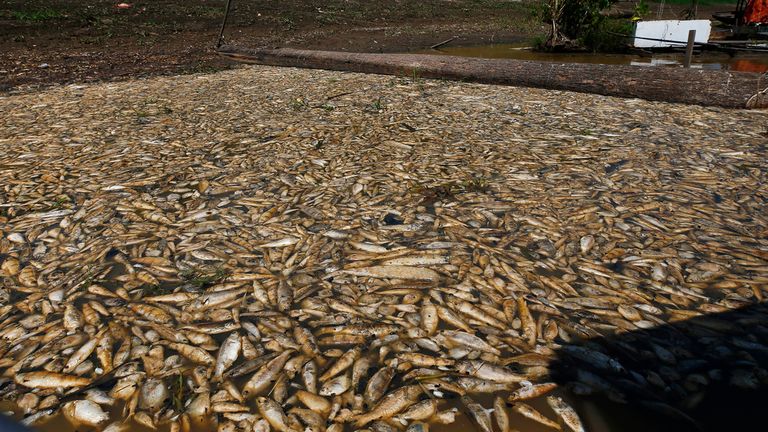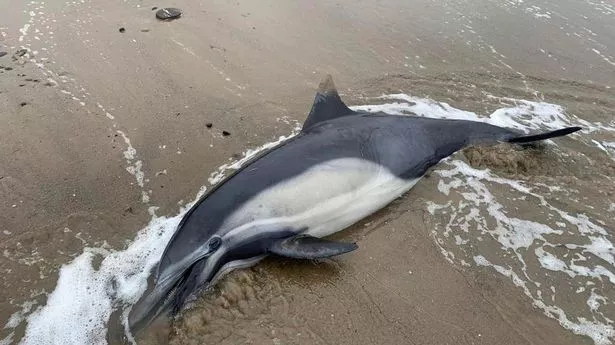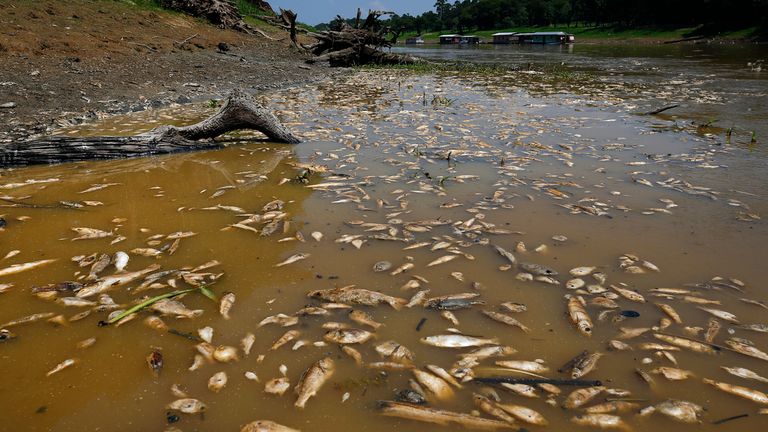According to specialists, a significant number of dolphins, over 100, have perished inside the Brazilian Amazon jungle over the course of the previous week.
This unfortunate occurrence is attributed to the region’s ongoing struggle with a severe drought.
Furthermore, if water temperatures persist at elevated levels, a considerable number of more dolphin fatalities may be anticipated in the near future.
According to the Mamiraua Institute, a research organization affiliated with Brazil’s Ministry of Science, Technology and Innovation, an additional two deceased dolphins were discovered on Monday inside the vicinity of Tefe Lake.
This particular lake has significant ecological importance for both animals and fish residing in the surrounding area.
The video footage shown by the institution showed vultures engaging in scavenging behavior on the bodies of dolphins that had washed ashore on the lakeside.
According to local media reports, a significant number of fish have perished.
According to experts, the primary factor contributing to the mortality of aquatic organisms in the lakes within the area is attributed to elevated water temperatures.
The Tefe Lake area has seen temperatures above 39 degrees Celsius (102 degrees Fahrenheit) in the last week.
The Chico Mendes Institute for Biodiversity Conservation, an agency of the Brazilian government responsible for the management of conservation areas, has sent teams of veterinarians and specialists in aquatic mammals to conduct investigations into the reported fatalities.
According to Miriam Marmontel, a researcher affiliated with the Mamiraua Institute, the population of river dolphins in Tefe Lake was estimated to be around 1,400 individuals.
According to Marmontel, around 120 animals have been lost over a span of one week, potentially accounting for a range of 5% to 10% of the whole population.
Since the previous week, workers have been retrieving the lifeless bodies of dolphins in an area where arid rivers have adversely affected economically disadvantaged families living along the riverbanks, causing their boats to get stranded in the sandy terrain. On Friday, Governor Wilson Lima of Amazonas proclaimed a state of emergency in response to the drought situation.
The mayor of Tefe, Nicson Marreira, who governs a city with a population of 60,000 inhabitants, expressed the government’s inability to provide food supplies directly to some remote settlements due to the absence of water flow in the rivers.
According to Ayan Fleischmann, the Geospatial coordinator at the Mamirauá Institute, the drought has significantly affected the populations living along the rivers in the Amazon area.

According to the speaker, several villages are experiencing isolation since they lack access to high-quality water and are unable to use the river, which serves as their primary mode of transportation.
According to Fleischmann, the water temperatures saw an increase from 32 degrees Celsius (89 degrees Fahrenheit) on Friday to about 38 degrees Celsius (100 degrees Fahrenheit) on Sunday.
According to his statement, the reason of the dolphin fatalities is still being investigated, with the high temperature being identified as the primary factor under consideration.


